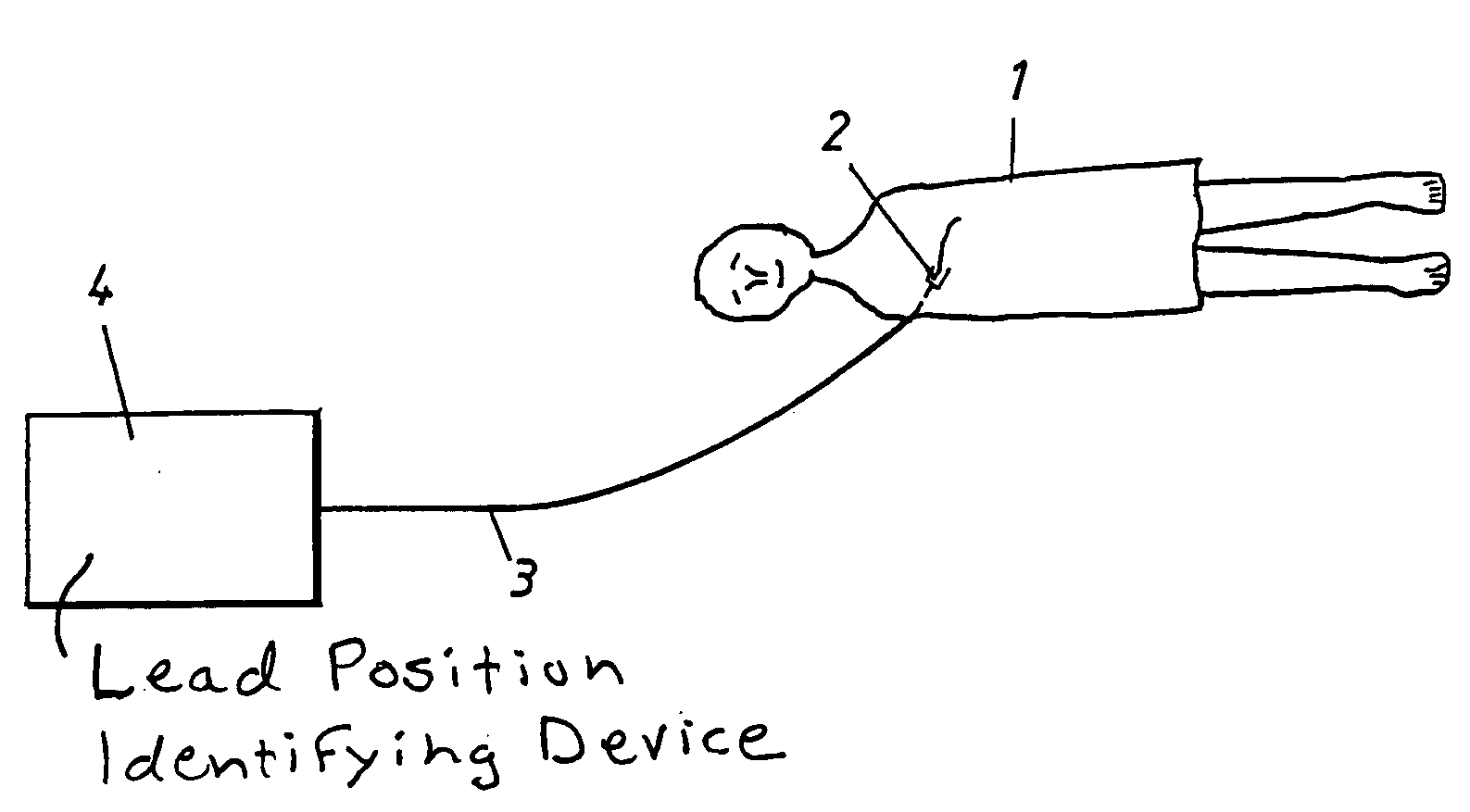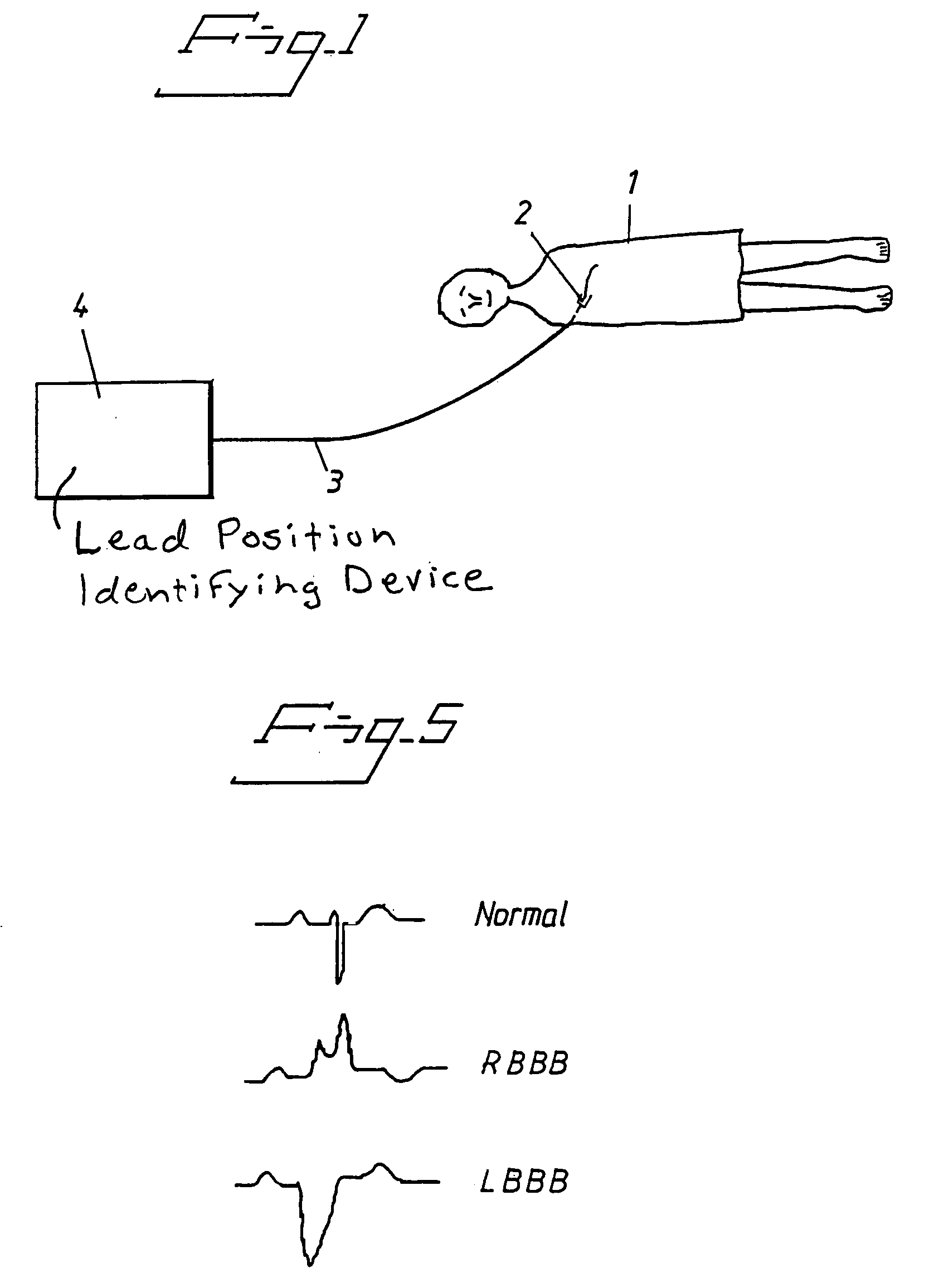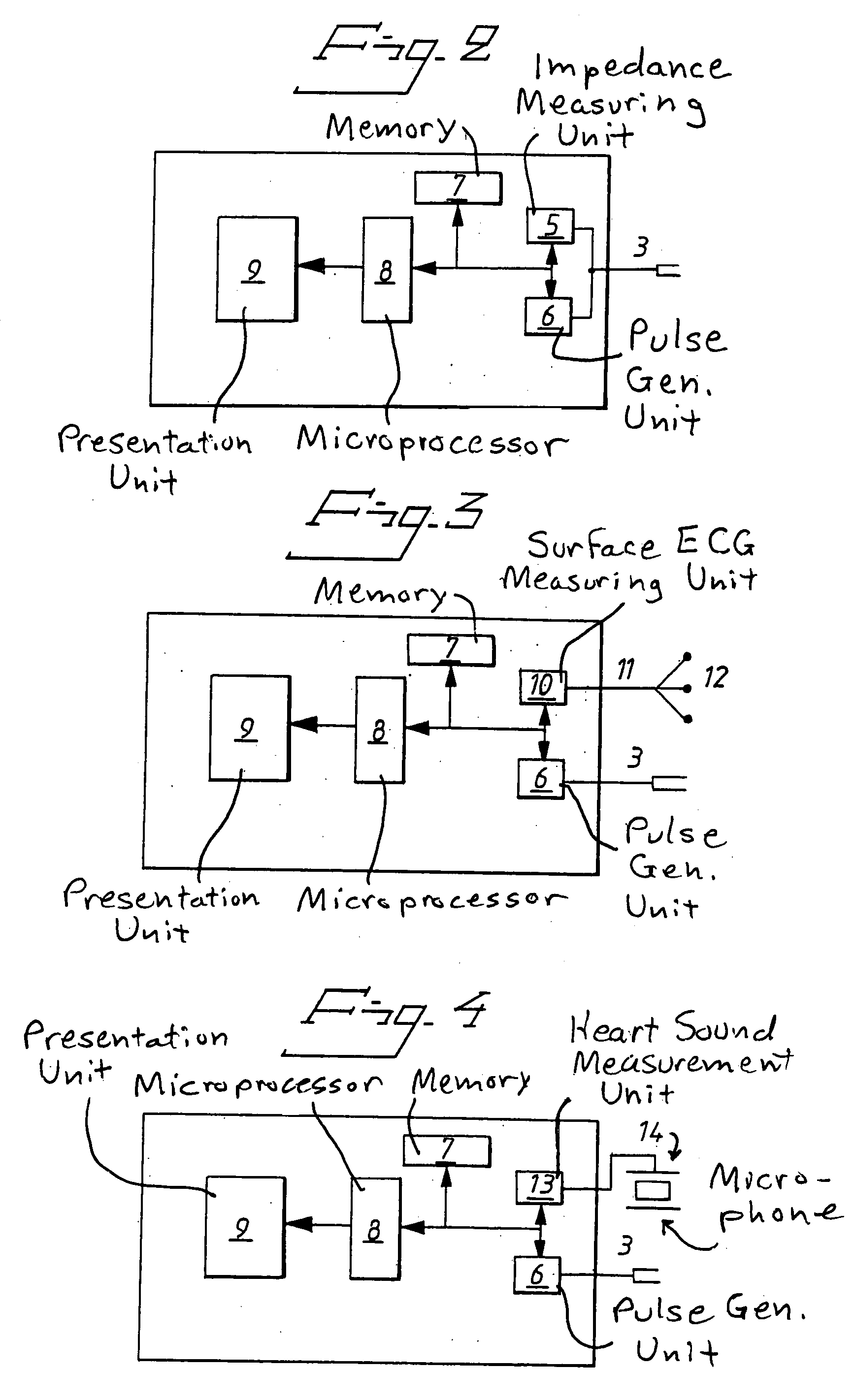Arrangement and Method for Evaluating Operational Effectiveness of Implantable Medical Electrode Leads for Different Lead Placements
a technology of implantable medical electrodes and lead placement, which is applied in the direction of blood flow measurement, catheters, sensors, etc., can solve the problems of difficult to determine whether a lead has been properly positioned and adequate tissue contact has been achieved, and it is difficult to get the lead to the proper or desired site. , to achieve the effect of improving the quality of life and simplifying the procedur
- Summary
- Abstract
- Description
- Claims
- Application Information
AI Technical Summary
Benefits of technology
Problems solved by technology
Method used
Image
Examples
Embodiment Construction
[0040]FIG. 1 illustrates the situation during the implantation during a pacemaker implantation. The patient 1 is placed on a table during the implantation procedure. The lead or leads 2 to be implanted are inserted via a suitable vein. Via this vein the leads are placed in the patient's heart under fluoroscopic supervision. Possible positions for different leads could be right atrium, the right ventricle, the left atrium or the left ventricle via the coronary sinus. Via the coronary sinus a lead can be placed in a suitable coronary vein for pacing and sensing the left ventricle of the heart. The position of the lead for pacing and sensing the left ventricle is very important for the hemodynamics. The device 4 is generally known as a Pacing System Analyzer (PSA). The device 4 is connected to the lead to be implanted via an adaptor cable 3. The device 4 is according to current practice used to measure certain important data related to the lead to be implanted. This data may be R-wave ...
PUM
 Login to View More
Login to View More Abstract
Description
Claims
Application Information
 Login to View More
Login to View More - R&D
- Intellectual Property
- Life Sciences
- Materials
- Tech Scout
- Unparalleled Data Quality
- Higher Quality Content
- 60% Fewer Hallucinations
Browse by: Latest US Patents, China's latest patents, Technical Efficacy Thesaurus, Application Domain, Technology Topic, Popular Technical Reports.
© 2025 PatSnap. All rights reserved.Legal|Privacy policy|Modern Slavery Act Transparency Statement|Sitemap|About US| Contact US: help@patsnap.com



